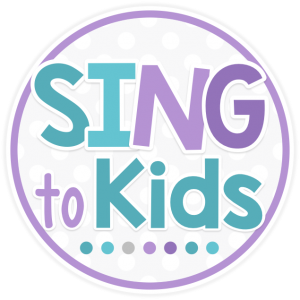I love guiding children to create, improvise, and compose music. Helping children to find their “creative voice” through music is an important part of my curriculum. We do this in a variety of ways in each grade, with the culminating project being “Background Music” in fifth grade. I would love to share my process with you in hopes that you might try a similar project with your own students.
I feel like I need to preface everything by saying – you are going to need some technology for this project. Whether you use laptops, Chromebooks, or iPads, this is one of those projects that requires technology. I’m very lucky that I have access to both iPad minis and iMacs in my classroom (all obtained through grants). We use Garage Band and iMovie for this project, but you could use a multitude of programs to create music.
Exploring How Music Creates an Effect
The first thing we do as a class is explore how music enhances movies by creating an effect. We watch several clips of child-friendly movies and video games with the sound muted to note what the mood might be, then we listen to how the director and composer uses music to create mood. Not only do we talk about the music, we also discuss what role sound effects play in creating mood. There are some create blog posts to use but PLEASE do your due diligence as language is not always appropriate for young children. I love Pond5Blog for his discussion of different ways music creates mood and meaning onscreen. You can also read about the process a composer takes when composing for film on Wistia. There is also fantastic post about how Marvel uses (or doesn’t use) music to create effect as well on The Marvel Symphonic Universe on YouTube. These are great posts to reference as the teacher if you’ve never taught an unit like this before.
Once my students have a basic understanding of the scope/sequence of our project, they break into small groups and begin to discuss what kind of clip they would like to use in their own composition. I will say, at this point, my students may choose to create music to a movie clip* or a video game** – as most of my students have some experience with gaming. Video games use the same techniques with music and sound effects to create music with a mood. The only restrictions I place on my students is that their clips are PG (non-violent, no language).
Finding Clips for Student Projects
There are several different ways to proceed at this point – one is have students record each other acting out a scene. This is the safest option to avoid any issues with copyright. Another is to provide 4-6 clips for students to choose from or for each group to choose their own clip. There are Public Domain Cartoons available for these kinds of projects, although the clips are quite dated. I’ve done both and providing a few clips for students to choose from is by far the easiest choice from the teacher’s perspective. If you choose the to provide 4-6 clips, be sure to get suggestions from students for the clips so that they are relevant to what they enjoy. Each group choosing their own clip creates a lot of extra work for the teacher as you have to download and cut the clips down. My groups are choosing their own clips right now and although I love that EVERY group is doing something that they love and are passionate about, it certainly came with some extra work on my end.
After student groups are formed, the next thing they will need to do is to choose a clip. If you are providing the clips for them from a Public Domain site, this can be done easily in class. If students are choosing clips of their own, I recommend that students do this out of class. My students searched for clips on YouTube on their own time, then sent me the clip URL in a Google Doc. Those who did not use Google Docs wrote the name of the clip down explicitly. This is VERY important. If you are going to rip the gameplay clip from YouTube, you will need the entire title of the clip. For gameplay, I suggest using ClipGrab. It is a program that you download and it allows you to search and download YouTube clips from your computer. With ClipGrab, you’ll need to make sure you have the exact title of the link you are searching for as it will only give you the top 10 videos of the clip you search for. The more specific you can be, the better!
Plan Your Work, Work Your Plan
Once you have the clips the students are going to use, the next thing is to edit the clip into a manageable length for students. I typically aim for a 90 second clip for students. We may go a few seconds less or more, but 90 seconds is actually A LOT of music to plan for. I use iMovie for this process, but again, depending on your computer/equipment, you may find another program useful. While I am cutting the clip to 90 seconds, I also go into the sound bar and mute the sound from the clip. This way, once the new clip is saved, there is no sound associated with the clip.
Before we had iMacs in the music room, I saved each video as a Quick Time video and put them into a Dropbox folder that was synced to my iPads. That way, as students worked, they could pull up their video and watch it. Now that we have the iMacs, I simply save the movies to the Theater and students watch them from there. As groups begin to devise their plan for their clip, we use a worksheet to plan our work. You can download a copy here. It’s just a way for my students to plan and organize their work. As they watch their clip, they take notes on the overall mood of the clip, specific sounds needed throughout the clipart (and make notes of the time it is needed), as well as changes of mood throughout the clip.
Once they have studied the clip and taken notes, they begin to build their composition in Garage Band. There are a multitude of loops available in Garage Band, but with the SMART Instrument choices, students can also create and compose their own music and layer it with loops and sound effects. One of the important conversations we often have to have is about the economy of sounds. It’s so easy for students to fall in love with ALL the sounds, so much so that the texture is too thick to really create a mood at all.
It takes students 3-4 classes to really get their music together and even then, there is another 1-2 classes of editing involved before there is a final project. As students complete the soundtrack in Garage Band, we export it to our iTunes Library and layer it over the clip in iMovie. At this time, students can add title screens, transitions (when necessary), and credit pages. It’s a lot of fun to see how students bring their clips together. We love to celebrate the completion of our projects with a red-carpet event and showing for each class.
Hope this gives you some great ideas to try in your own classroom! Leave me a note below if you do a similar project or have a resource you love for this type of composition!
You can see some of my students’ past projects here:






Connect with me!